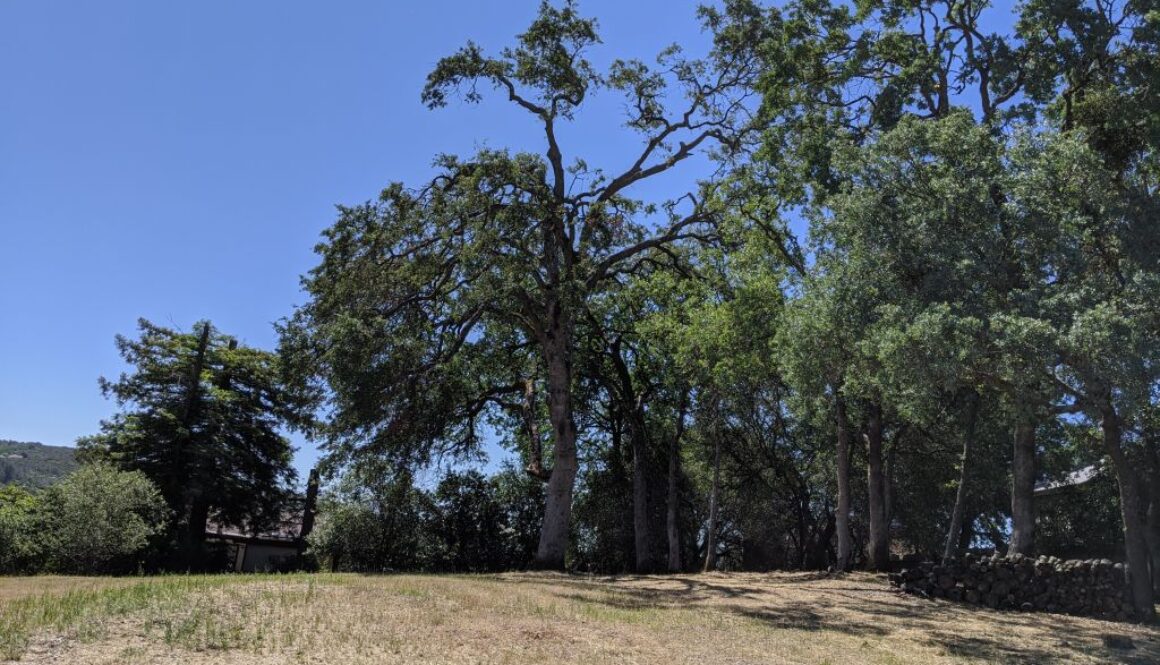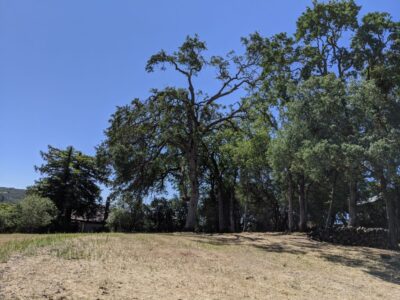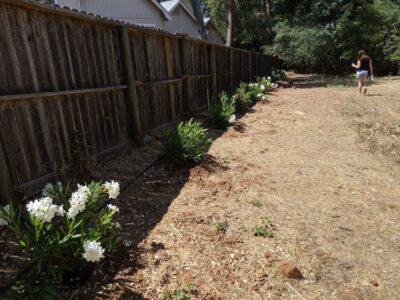
Project Management
Project management — history, ideas and execution.


Easement Issues
Title Defect
The property I purchased was merged from two parcels. There is an public utility easement between the two parcels that got merged. This is a title defect which was not caught during the title search. I even opened a case with the title company, but of course, the title company has words in their contract that prevent me to get any reimbursement from them for that defect. Title insurance is a scam.
Abandonment of Easement Process
It turns out that there is a process to remove a preexisting easement on a property. It is called Abandonment of Easement, and it is quite complicated. First, you need to get your surveyor to prepare a map, and a legal description of the area where the easement needs to be abandoned. Then you contact all the utilities that could possibly have their installations in there, or plan an installation, and get them to agree to drop their right-of-way. Once that is complete, you get a current preliminary title report, pay $670 to the county, and the county may (or may not) agree to remove the easement from the official map.
Options
I could leave the easement alone. The architect came up with a satisfactory site plan that did not cross the easement. However, I would not be happy if I woke up one day to see Pacific Gas and Electric stringing some wires right next to my house.
The other option was to initiate the process, eat the costs, and get rid of the easement. This is what I did. This process will take some time, probably eight to sixteen weeks.

Obtaining a Land Survey
Lack of Information
After the decision has been made, and after the requirements document written, I lacked the information that would allow me to plan for the new house. Namely, I needed the land survey, and the topographic map of the property. That would allow me to know the elevation differences, locate a potential spot for a hangar and a driveway.
Choosing a Surveyor
I obtained 4 contacts for local area surveyors. I sent out emails to all four of them. One did not respond at all, so they were out. One came highly recommended by at least one, if not two architects I was discussing the project with. His offer was acceptable, but another surveyor came in with much cheaper offer.
I made the decision to go with the recommended surveyor, but he stopped responding to my emails. It turned out he took a week off. I then engaged the cheaper surveyor, and he was able to complete the work quickly. I had the topographic maps in three days!
Potential Problem Discovered
The surveyor discovered a potential problem with the property. The airpark was created in nineteen-sixties by subdividing a large parcel. The county reserved a Public Utility Easement on the borders of each parcel.
In year 1998, the previous owner bought one parcel. A year or two later they bought another, adjoining parcel. They merged the lots into one, bigger lot, but never took care of the easement that was now running through the middle of the merged parcel. Since they never built on the property, that was not a problem.
The easement could pose a problem for us. My initial idea of house placement was to place it right in the middle, on top of that easement. Another idea would be to place the house near the oak trees, but the hangar would have to be detached that way.

Choosing an Architect
Where to Find the Architects?
An obvious place was to search online. I scoured Houzz, Google and Yelp for local companies with solid recommendations. I also called the companies recommended to me by my neighbor, and the realtor.
Ultimately, I settled down on four companies, all local, with good recommendations. One company had a scathing, negative review on Yelp, but that review was so overboard that I did not take it seriously. The author was criticizing the company for a “mistake” that costed them $1,000 more to build a house. That’s a pocket change when you are building. I also liked the well thought out reply the company posted.
Bidding Process
I shared my requirements document with each of the companies selected during the previous step. I met with most of them at the property. Only one company said it wouldn’t be necessary. That was because the architect actually lives in the subdivision, and knows exactly which property it is.
I got the bids from each of the architects. As expected, nobody was actually familiar with building a home with a hangar. The bids were in $19k to $40k range.
Selection Process
I was looking at several criteria during the selection process. The price was an obvious one, of course. Enthusiasm was hard to gauge, but I wanted the architect to be enthusiastic about the project.
The first architect came to the lot and was listing potential problems with the lot, and was not quite sure about the hangar. The enthusiasm gauge was low, and the offer I got from them was definitely the highest of the four.
Another architect responded very quickly, promising me a quote in two days. I waited two weeks, and finally asked for the quote again. Of course I got it then. The price was not as bad as the first one, but a bit on the higher side. I met with the architect at the property, and they were visibly excited about the prospect. They also brought a builder with them to help me gauge prices. They had many great ideas about hangar placement, strong and reasonable opinions on where the house should be located on the lot, generally a positive experience.
The third company just sent a low quote but they appeared to be uninterested in the project. No followup questions, no contact.
The fourth company was responding quickly to my questions. I met with the architect on the property, and they also were quite excited at the prospect. The architect even brought a sketchbook to draw some concepts right there and then. Their offer came in as the second lowest of the batch.
Final Decision on Architects
I chose the fourth company. The single, main reason was their responsiveness to my questions. Their willingness to visualize on the spot what they were talking about, high enthusiasm, and price were also small factors, in that order.
The second company countered the offer, matching the price of the fourth. Even then, I remembered the two weeks I needed to wait for their initial offer, and declined their offer.
The point is: be responsive to your potential customers 🙂

The Decision

 Bay Area Living
Bay Area Living
Living in the San Francisco Bay Area has many positives and negatives, as it is true with anywhere, really. I certainly appreciate that the Bay Area house we are living in appreciated in value quite a bit since we bought it. I love the moderate weather, no need for air conditioning (save for a few days a year), and abundance of work options for a software engineer in Silicon Valley. I treasure the multicultural aspects of dining in the area.
On the negative side, the condo we live in has no sound separation from neighbors (a baby cries, movie plays, neighbors having sex, you hear it all). Prices are exorbitant. Highways are crowded. City councils approve more office buildings over housing because they bring revenue without the need to build additional housing infrastructure, like schools, fire stations, hospitals etc. That, in turn, creates congestion on the roads, and long commute times. And that “Big One” possibility still lingers at the verge of consciousness. As most people in California, we do not carry earthquake insurance. It would be pointless anyway in a condo.
Tax Considerations
California has one of the highest state and local tax rates in the country. Taxes should always be a consideration in retirement (hence that’s why Florida and Nevada are overflowing with retirees, as there are no state taxes there). For the longest time I wondered if I made a good decision by purchasing a land in California. Additionally, the Scale Master I mentioned in one of the previous posts has recently moved to … Nevada, to escape the taxation aspect.
Building Permits
Another monetary aspect, where the local authorities fleece you, is building permits. It turns out the county building permit costs close to 50 grand. 20k for the road improvements, 8k for schools, who knows where the rest goes. I am sure that pretty much anywhere else a building permit would be much less.
On top of the fees, I heard the county is not the quickest to move with the permits.
Pandemic Brings Change
At the beginning of 2020, I was actually thinking of selling the property, and maybe purchase land or existing house in Florida. Then, I remembered the bugs, humidity, alligators and hurricanes, and still was hesitating.
My position changed when the COVID-19 pandemic hit. I understood that work proximity keeps people in the Bay Area. Once you have a possibility to work from home (from anywhere), the congestion will ease. Property prices will become stagnant or diminish. Some companies (like Facebook or Twitter) already announced that employees will be able to work from home permanently if so desired.
The Decision
So I made the decision. Let’s build our property up, about 4 years ahead of schedule. We shall see if the decision is good. So far it seems it is.

The Interim Years
The Purpose
In the previous post, we learned that I purchased a piece of land at an airpark in California. The purpose of that purchase was to eventually build my retirement house, also known as the “forever house”.
I still have a few years of work ahead of me before I retire, I thought. The property needed some taxes paid, and grass cut. Ah, cutting the grass… The local fire department is super aggressive, and is sending me these very threatening postal mails. They claim the weeds on my property are now taller than 1/2 inch and need to be cut. I am ignoring them, as these letters are a waste of taxpayers’ money. I am going to have the weeds cut, but I am not going to cut them every weekend. I live about an hour away by airplane, and I don’t have a shed to store the mower, so I need to pay someone to cut the grass.
But, I digress. This is going to be my retirement home, and I will build it in maybe 7-8 years. My offspring will be out of college, and I will move there then.
 The Interim Years
The Interim Years
Nothing major has happened on the property over three and a half years since the purchase. I removed some gray pines that were essentially weeds on the property. I planted some oleanders, so that they would grow tall and provide some privacy from the neighboring townhouses. And yes, I had the grass cut, heh.
 Irrigation Trouble
Irrigation Trouble
I needed some irrigation for the oleanders. The property has city water connected, so I ran the hose from the spigot to the oleander bushes, and installed drip irrigation to conserve water. It turned out the spigot had no water. The water meter was buried under a few inches of soil, apparently untouched for over thirty years. I had to replace the water pressure regulator, as it clogged and would not work.
 Pruning Oaks
Pruning Oaks
There are some beautiful, tall California Oak (Quercus agrifolia) trees on the property. At one time, I had to have these trees topped, as they interfered with the air corridor around the airport. I ensured that only minimal height was lost, and that the trees would survive.